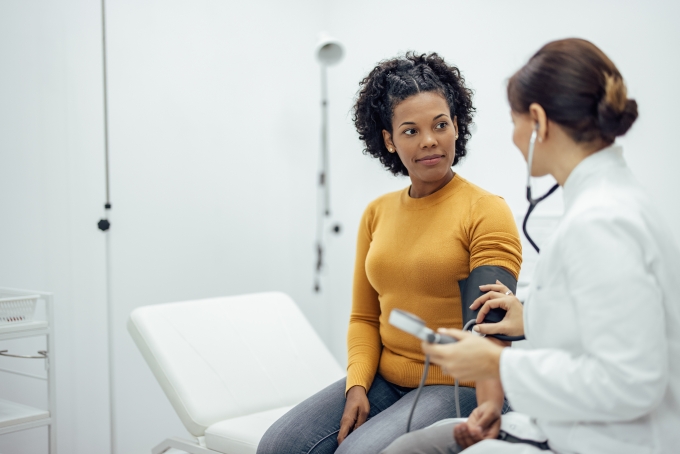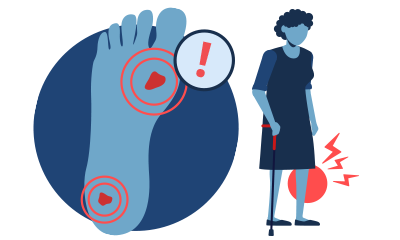Peripheral Artery Disease
(PAD)
Overview
Peripheral artery disease (PAD), also referred to as peripheral vascular disease (PVD) or “poor circulation,” is caused by a buildup of fatty deposits (plaque) inside the arteries that carry blood from the heart to other parts of the body. When arteries become partly or completely blocked with plaque, blood flow is restricted, interfering with the delivery of oxygen and nutrients that your muscles and organs need to work properly. It’s estimated that about 6.5 million people ages 40 and older in the U.S. have PAD.1
When you walk, climb stairs, play sports, or are physically active, your muscles and organs require more blood than usual. When the muscles can’t get more blood due to the blockage of the arteries from PAD, the muscles are in pain. When you rest, the pain goes away (unless the blockage is severe) because the muscles receive the blood and oxygen they need.
PAD affects not only how well you live but also how long you may live. You may find that you can’t walk as far or for as long as you used to, but if you have PAD, you’re also at greater risk of heart attack and stroke. As serious as PAD is, many people have never heard of it and don’t know how important it is to get help if you have it.
Who is affected by PAD?
You’re at risk for developing PAD if you:
- Have leg pain
- Smoke or have a history of smoking
- Are over 70 years old
- Are over 50 years old and have diabetes
- Are over 50 years old and smoke or have a history of smoking
Did you know?
- Black Americans have an increased risk of PAD compared to non-Hispanic whites.1
- Hispanics may have similar to slightly higher rates of PAD compared to non-Hispanic whites.1
- Black people have a higher risk of PAD than people of other races or ethnicities. Black people are also more likely to have complications of PAD, such as problems walking or limb loss.2
- American Indian women* have a higher risk of PAD compared to white or Asian American women.2
- While Hispanic/Latino adults and white adults have similar risk levels of PAD, rates of lower extremity PAD are higher among Hispanic/Latino adults with highly sedentary lifestyles, even when they do not have any other risk factors.2
*The term “women” in the context of “women’s cardiovascular health” applies to individuals assigned female at birth (AFAB) who have a female biological reproductive system, which includes a vagina, uterus, ovaries, Fallopian tubes, accessory glands, and external genital organs.
*The term “men” in the context of “cardiovascular health” applies to individuals assigned male at birth (AMAB) who have a male biological reproductive system, which includes a penis, scrotum, testes, epididymis, vas deferens, prostate, and seminal vesicles.

Are you at risk?
Learn more about your risk and how to reduce your risk factors.
Stories of Hope and Recovery
Don Grove, a retired Navy Master Chief, remembers a time when walking up a slight incline was nearly impossible due to the excruciating pain in his calf muscles.
